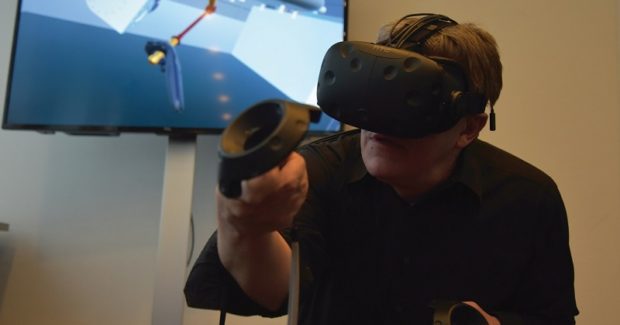Service Training and Instruction in Virtual Space
Take a look at how Durr Ecoclean uses VR technology to efficiently train service technicians around the world on maintenance of the Scara manipulator used in their EcoCFlex 3 flexible cleaning cell.
Posted: June 26, 2017
Virtual reality (VR) is a term currently associated mainly with computer games. However, the rendering and simultaneous perception of reality – and its physical properties – in a real-time computer-generated, interactive virtual environment also offers plenty of opportunities in industry. Dürr Ecoclean (Filderstadt Germany), a manufacturer of forward-looking machinery, systems and services for industrial part cleaning and surface treatment in the automotive manufacturing and supplier industries, as well as other industrial market sectors, relies on virtual space in training their service technicians all around the globe.
More specifically, their first VR application was developed by Tema Technology Marketing AG (Aachen, Germany) to conduct maintenance training on the Scara manipulator developed for their EcoCFlex 3 flexible cleaning cell. In this scenario, the instructor and the trainee may be located many miles apart. For a realistic rendering of all maintenance operations and workflows, a VR model of the manipulator is created from CAD data. This model can be moved in all directions of freedom via slider bars. Every bolt can be slackened and re-tightened in this manner, yet the individual jobs are logically structured and interdependent.
For example, in performing an oil change in the virtual system, the transmission cover can only be re-closed after oil has actually been added. This approach ensures that the various steps will be trained in their correct and full sequence, thus becoming “ingrained” as a best practice in the technician. In order to achieve this, each service operative can move freely on a defined surface area in virtual space, e.g., by walking around the manipulator.
“This development is an important step in ensuring that our global service technicians will be perfectly familiar with their tasks and can provide excellent support to our customers in minimum time,” stated Michael Förster, the chief executive officer at Dürr Ecoclean, in explaining his company’s decision to use VR in training.











